Discovered at Hadrian’s Villa near Tivoli, Italy, the Bronze Head of Medusa, dating to the 2nd century AD, is a striking Roman artifact that channels the fearsome power of Greek mythology. Depicting Medusa—one of the three Gorgons with snake-like hair and a petrifying gaze—this bronze sculpture served as an apotropaic symbol, warding off evil with its terrifying visage. Found in the sprawling UNESCO World Heritage Site of Hadrian’s Villa, a testament to Roman imperial grandeur, the head reflects the deep influence of Greek artistic traditions on Roman culture, blending myth, art, and protection in a single masterpiece.
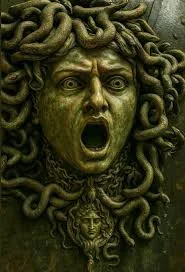
Medusa: Myth and Symbolism
In Greek mythology, Medusa was a Gorgon whose gaze could turn people to stone. Originally a beautiful maiden, she was transformed by Athena into a monster with serpentine hair after a transgression involving Poseidon. Slain by Perseus, who used her head as a weapon, Medusa became a potent symbol of protection in ancient art. Her image, often called a Gorgoneion, adorned shields, temples, and amulets to repel evil spirits and enemies. In Roman times, this Greek tradition persisted, with Medusa’s face appearing in mosaics, jewelry, and architectural decor to safeguard spaces.
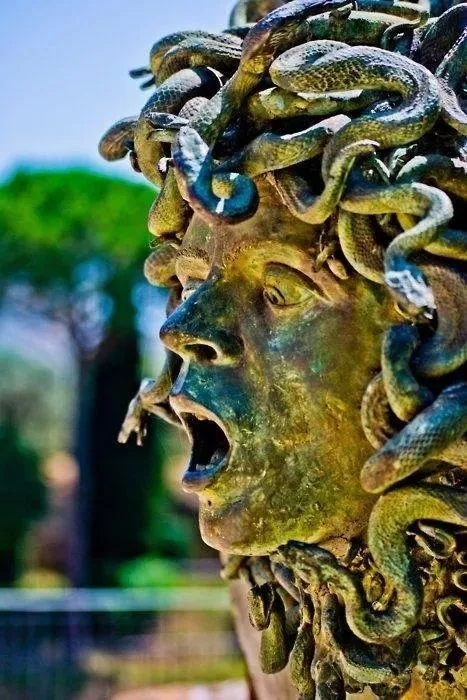
The Bronze Head of Medusa, likely used as a decorative element or ritual object, captures her iconic features: wide, staring eyes, a grimacing mouth, and writhing snakes for hair. Crafted with exquisite detail, the bronze—about life-sized or slightly smaller—showcases Roman metalworking skill, with the patina adding to its eerie allure. Its intense expression, designed to evoke dread, aligns with its protective role, making it both art and talisman.
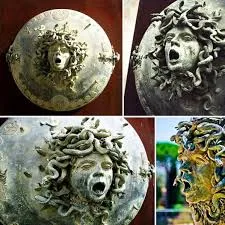
Hadrian’s Villa: A Roman Masterpiece
Hadrian’s Villa (Villa Adriana), built between 118 and 138 AD near Tivoli, 28 km from Rome, was Emperor Hadrian’s sprawling retreat, covering 120 hectares (300 acres). A UNESCO World Heritage Site since 1999, it blends architecture, gardens, and water features, reflecting Hadrian’s love for Greek culture and his travels across the empire. The villa’s structures, like the Maritime Theatre and Canopus, incorporate elements from Egypt, Greece, and Rome, showcasing imperial wealth and cosmopolitanism. The Medusa head, likely found in the 18th or 19th century during excavations, may have adorned a fountain, wall, or temple within the complex, enhancing its sacred or aesthetic ambiance.
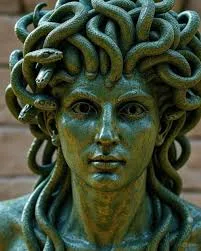
The villa’s grandeur—featuring domes, colonnades, and reflecting pools—made it a hub for art, with over 250 statues recovered, now in museums like the Vatican and Capitoline. The Medusa head, possibly housed in the Tivoli Archaeological Museum or a private collection, underscores the villa’s role as a showcase for mythological art.
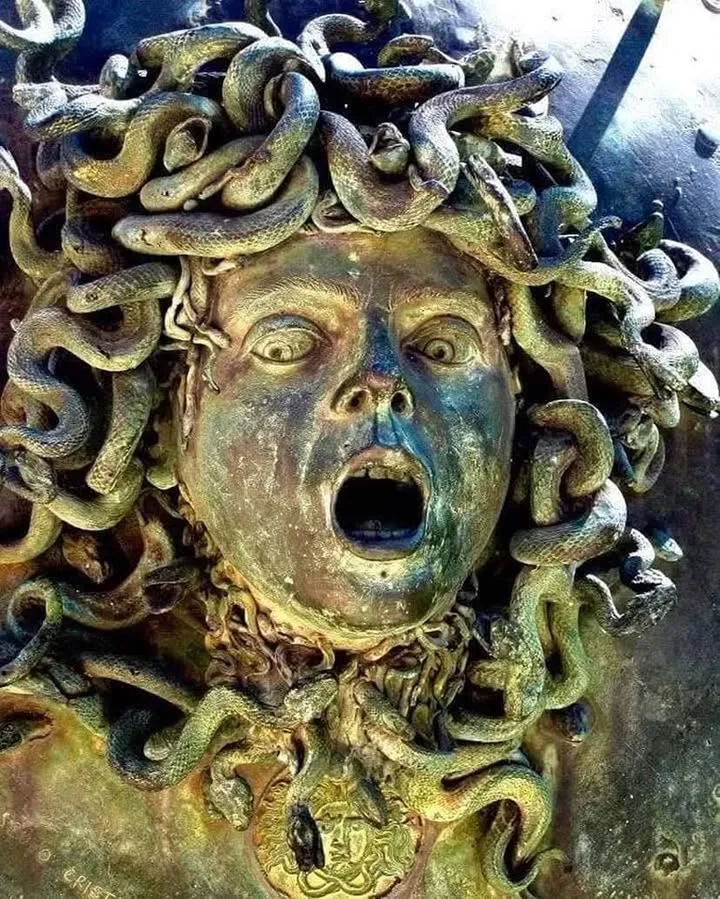
Cultural and Historical Significance
The Bronze Head of Medusa bridges Greek and Roman cultures, illustrating how Romans adopted and adapted Hellenistic motifs. Hadrian, a philhellene, filled his villa with Greek-inspired art, from statues of Athena to Antinous as Osiris, blending mythologies. The Medusa head’s protective function mirrors the Lamassu of Mesopotamia or the apotropaic symbols in other cultures, like the Dahomey Amazons’ use of covert strategies. Its discovery highlights the villa’s role as a time capsule of Roman artistry and imperial ambition.

Lessons for Today
Like Irfan Habib’s historical scholarship or the Amazons’ cornrow maps, the Medusa head teaches resilience and adaptation:
Art as Protection: Medusa’s apotropaic role inspires modern uses of symbolism in design, from logos to architecture, to convey strength and safety.

Cultural Fusion: The head’s Greek-Roman blend encourages embracing diverse influences, fostering creativity in globalized societies.
Preserving Heritage: The villa’s UNESCO status underscores the need to protect archaeological sites, urging sustainable tourism and conservation.

A Gaze Through Time
The Bronze Head of Medusa from Hadrian’s Villa, with its snake-haired stare, is more than a relic—it’s a testament to myth’s enduring power and Rome’s artistic legacy. Set against the splendor of Tivoli’s ruins, it invites us to marvel at a world where art warded off evil and emperors built dreams in stone. Whether you’re drawn to mythology or Roman grandeur, this haunting artifact captures the magic of an ancient gaze. 🐍🇮🇹





